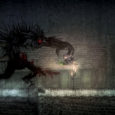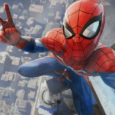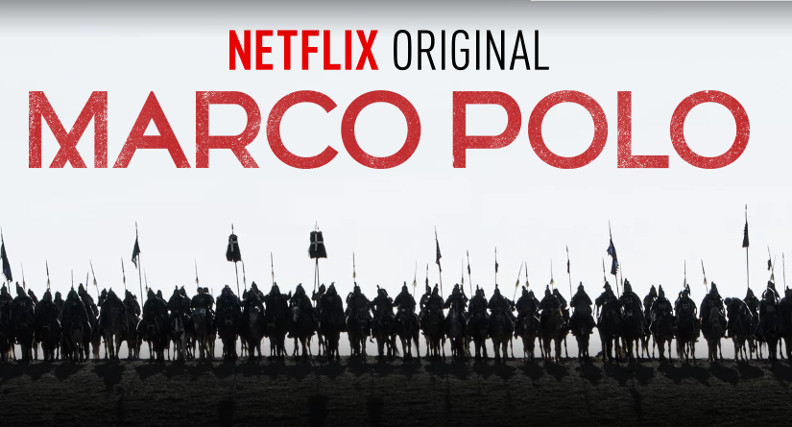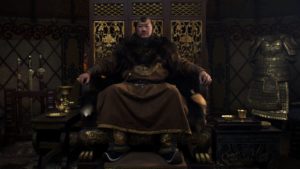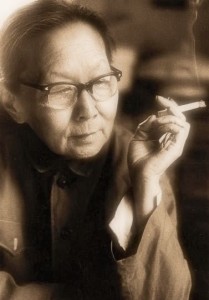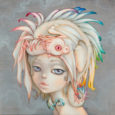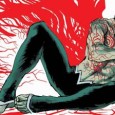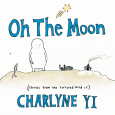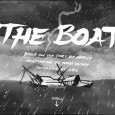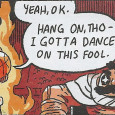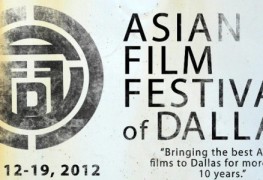I have been a longtime fan of the Dynasty Warriors series. Developer Omega Force, and publisher Koei Tecmo has always relied on retelling the Records of the Three Kingdoms. Since the first game in 1997, the property has always been about slaying giant forces of soldiers and making you feel like a god on the battlefield. While Dynasty Warriors 9 is no different, it stumbles plenty which keeps it far from being the best entry in the series.
Dynasty Warriors 9 puts story in the driver’s seat. The tale of how the kingdoms of Wei, Wu, and Shu rise, fall, conquer and be concurred, is the propelling force that guides the experience. Long gone are the pre-battle menus and preparations, traded in for an open world and a sense that the battle never stops. While putting the story of each faction in the spotlight is a good move, making the switch to open world has a plethora of shortcomings.
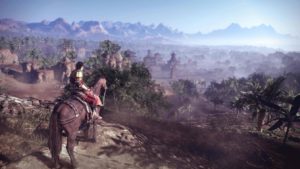 The open world is empty, soulless, and just plain boring to traverse. There are materials to collect, towers to climb, surrounding areas to scout, and animals to hunt. Using materials acquired in the open world allows you to craft new weapons and items. However, none of this feels good, and none of it is in any way interesting or entertaining. The ability to fast travel to previously visited locations on the entire open world map of China is a nice feature, but it almost felt like a death sentence when a fast travel point was not near to my next desired battle. I should not feel like it’s a chore to simply ride a horse across a map.
The open world is empty, soulless, and just plain boring to traverse. There are materials to collect, towers to climb, surrounding areas to scout, and animals to hunt. Using materials acquired in the open world allows you to craft new weapons and items. However, none of this feels good, and none of it is in any way interesting or entertaining. The ability to fast travel to previously visited locations on the entire open world map of China is a nice feature, but it almost felt like a death sentence when a fast travel point was not near to my next desired battle. I should not feel like it’s a chore to simply ride a horse across a map.
The combat has been changed, and while it works and functions well, I had to unlearn about 20 year of Dynasty Warriors mechanics to learn these new ones. Gone are the two button combos, traded in for a less interesting system. Playing on the PS4, I had to utilize the Square button for regular attacks, and then hold down R1 and then choose a face button to do a specific attack, such as a launch, a stun, a special, or the likes. I can’t emphasize enough that the combat works, and when you get the hang of it, it is efficient, but I just prefer the old style system; it felt like it flowed better.

Combat changes and open world issues aside, the story itself has many good things going for it, but just lacks in overall execution.
Leaning about each faction, the characters in the family, and how they impacted the dynasty are all on display. A lot of the history is pretty spot on, which really elevates an overall boring experience. Leaning things like Sun Jian of Wu being a descendant of Sun Tzu was such a delight, and it is just one of many examples. While not 100% historically accurate, the information they do use paints a pretty good portrayal of the events that transpired during these warring times in China.
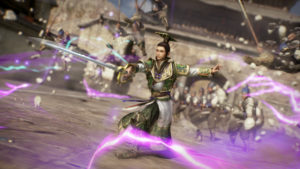 I put about 25 hours or so into the campaign. There are 13 chapters overall in the arcing story of the war, but there are many side stories and arcs such as Lu Bu’s battles. Seeing the “bad guys” perceiving themselves as the “good guys” was pretty entertaining. I was able to complete the entirety of the Wu story, and unlocked the final two chapters that exist only in the Shu story. The game lacks no content, because I could easily dump another 40-60 hours on completing each faction’s story and arc. While the narrative is interesting from a historical standpoint, the execution is just poor, specifically the voice acting being absolutely horrendous. I am talking the worst in any game in recent memory. It has been a while since a numbered entry of Dynasty Warriors has had English voice acting, and while it’s nice to know what people are screaming about in the heat of battle, it is almost offensively bad in terms of quality. Character animations in cutscenes are also awful, and the lack of effective writing really holds the interesting parts of the historical story back.
I put about 25 hours or so into the campaign. There are 13 chapters overall in the arcing story of the war, but there are many side stories and arcs such as Lu Bu’s battles. Seeing the “bad guys” perceiving themselves as the “good guys” was pretty entertaining. I was able to complete the entirety of the Wu story, and unlocked the final two chapters that exist only in the Shu story. The game lacks no content, because I could easily dump another 40-60 hours on completing each faction’s story and arc. While the narrative is interesting from a historical standpoint, the execution is just poor, specifically the voice acting being absolutely horrendous. I am talking the worst in any game in recent memory. It has been a while since a numbered entry of Dynasty Warriors has had English voice acting, and while it’s nice to know what people are screaming about in the heat of battle, it is almost offensively bad in terms of quality. Character animations in cutscenes are also awful, and the lack of effective writing really holds the interesting parts of the historical story back.
 Graphics are a huge issue here as well. How does this world look so poor? How do characters look so bad? Are we sure this is a 2018 game? I know Dynasty Warriors has never been known for its graphics, but this was a time for them to show us what they’ve got. While it is the best looking game in the series, the experience is completely marred by pop in of textures, character models, and mission objectives. So while it is the best in entry in the series, their best is many developer’s worst.
Graphics are a huge issue here as well. How does this world look so poor? How do characters look so bad? Are we sure this is a 2018 game? I know Dynasty Warriors has never been known for its graphics, but this was a time for them to show us what they’ve got. While it is the best looking game in the series, the experience is completely marred by pop in of textures, character models, and mission objectives. So while it is the best in entry in the series, their best is many developer’s worst.
The other big drawback is the actual quests and objectives. Every major battle is appointed a level, and you can bring down that difficulty level by engaging in side activities or quests. What’s cool are these quests have context for the changes they will have in the main battle. What is not cool is that every mission is basically go from point A to point B, and kill the thing. This would be less offensive if the main quests were any different…but they aren’t. In the end you can run straight to that main battle, without having done any side missions, grapple over the walls of the castle you are to infiltrate, run past every enemy and officer and right to the commander, and kill him. Nothing is stopping you from doing this due to the insanely easy difficulty. I was taking posts 10-20 levels higher than myself with extreme ease. So the stakes just felt low, and I never felt any incentive to actual fight my way to a commander.
The biggest offense of this game is the complete lack of co-op, be it online or couch. The series has a had a long time standing feature of couch co-op with a buddy…and yet it is missing from the most recent entry in the series. The online feature is less of a missed opportunity as it was never really the best. People however will still miss the online feature, as it is a pretty standard feature in most games these days. The only thing I wanted to do is run across the world with a buddy, split up, and take on different bases and missions…yet they didn’t even attempt to bring any of that into the fold.

I would feel like a criminal if I did not bring up the fun factor in not only this game, but the entire series. There is something so therapeutic about slaying thousands of enemies without having to really think or even be engaged. It is a very fun experience to see the ongoing battles that you are not even a part of, affecting the front line of battle, as forces push forward and back as they lose and win skirmishes.
Being able to jump from small battles to big battles is also a great way to keep the player in the moment. The fun factor alone is what makes this game worth snagging, especially if you are a long time Dynasty Warriors fan. Newcomers are probably less likely to enjoy this game, because it is showing its age and its lack of overall innovation. However, I do see long time fans being able to find the fun a bit easier, I still think they will recognize the many back steps this entry has taken when compared to previous entries.
I wanted to love this game. I wanted to be the champion of this game, screaming its fun from the mountain tops. Because while this title is fun, it is far from good. I don’t foresee patches or updates fixing the strong issues this game has, but if all you want to do is kill a bunch of melee weapon wielding warriors, this game will serve that up just fine. I just wish they had taken this time to do something more, something bigger… something better.
Finally, my favorite water based game has been turned into a Netflix original series! Kidding aside, Marco Polo seems like one of those shows that you either hate or love. While I understand that this show may not be for everyone, I implore anybody who has a fascination with history, the Silk Road, or the khans, to check this show out because it offers so much more than other shows on TV at this time.
Marco Polo takes a page out of the History Channel’s show, Vikings. It takes real historical figures, real moments in history, and real locations, and mushes them all together in a period piece show that takes many liberties in the name of creating a more entertaining and interesting story. Marco Polo also studies at the school of Game of Thrones as it ties its story and pacing directly towards the political intrigue of the world they are building. Multiple scenes this season of Marco Polo had me thinking of Vikings and Game of Thrones, and while this show is not on the same level as those, I feel it is playing in a similar ball park in terms of production, wardrobe, sets, and props.
 The show itself is called Marco Polo, but with limited clarification that the real Marco Polo ever even spent time in China looming over the credibility of the show, you have to go into it knowing that this series is not striving to be 100% historically accurate.
The show itself is called Marco Polo, but with limited clarification that the real Marco Polo ever even spent time in China looming over the credibility of the show, you have to go into it knowing that this series is not striving to be 100% historically accurate.
In the first season, the actor who plays Marco Polo, Lorenzo Richelmy, comes across as wooden, uninterested, and overall not a pleasure to watch play the character. Thankfully, though the show takes his name as its title, he has limited screen time despite being the starring man. Like many, I am of the camp that think the show should be renamed to “The Silk Road,” because the show is more about the Mongol and China war as well as Kublai Khan and his family. However, while watching Season 2 there was something so obvious in the changes Lorenzo Richelmy made to his performance. His line delivery was not as pain educing, and he showcased much more charisma that we all think of when pondering about the type of person the real Marco Polo probably was. Lorenzo did seem like he was in the shoes of the character more, and was having more fun walking in said shoes. By no means was this a memorable or amazing performance, but it was serviceable and that was enough for me to really get behind his scenes this season.
The real star of the show and ultimate scene stealer is Benedict Wong, who plays Kublai Khan. This guy has one of the most kinetic performances on TV right now. Every moment he is on screen he is oozing the great Khan of Khans which offers many memorable moments of a wide range of emotions on display. I could watch this guy act ALL day, and I think it would be a crime if he weren’t recognized by some sort of award, be it verbal or physical.
 There is always one character that I do not get enough of, and heck could even use a spin off show on and that is Hundred eyes, played by Tom Wu. Tom Wu is relatively unknown in terms of leading man roles, however he did have short spots in movies like Batman Begins, 007: Skyfall, and Kick Ass 2. This surprisingly talented actor really shines as Hundred Eyes, the blind monk who “serves” for Kublai. Some of the most emotionally rich scenes this season are from him and the always lovely Michelle Yeoh (Crouching Tiger Hidden Dragon) who continues her resurgence as the mighty protector, Lotus. There are so many great martial arts scenes with these two together as well as apart. The choreography really shines when either of these two are on screen.
There is always one character that I do not get enough of, and heck could even use a spin off show on and that is Hundred eyes, played by Tom Wu. Tom Wu is relatively unknown in terms of leading man roles, however he did have short spots in movies like Batman Begins, 007: Skyfall, and Kick Ass 2. This surprisingly talented actor really shines as Hundred Eyes, the blind monk who “serves” for Kublai. Some of the most emotionally rich scenes this season are from him and the always lovely Michelle Yeoh (Crouching Tiger Hidden Dragon) who continues her resurgence as the mighty protector, Lotus. There are so many great martial arts scenes with these two together as well as apart. The choreography really shines when either of these two are on screen.
Marco Polo is a show that looks good in terms of cinematography, set design, and wardrobe. Even though this show does not live up to the plateau that Game of Thrones and Vikings shows have created, it still stands on its own as a very intriguing and interesting “historical” show. The acting may not be perfect across the board, and some of the arcs may not bare fruit until late game but, the pacing always worked for me as a person who is deeply interested in the political and cultural nature of those times. While the show offers a somewhat high barrier to entry which relies on the viewer’s personal interest in this culture, the times, and political ongoings, I strongly suggest any and all who are interested in the Silk Road to check out this show. Start from Season 1, check out the Hundred Eyes episode in between season one and two and then finish off with 2, which ends on a major cliffhanger which has me hoping we will get plenty more of this show. It seems the viewers enjoy it more than actual critics, so it is just one of those polarizing shows that require your own eyes to see where your views align. Mine align strictly on the side of fandom and I could not be more hyped for more to come.
If you enjoyed it and want to chat, or need some convincing and want to ask questions, leave a comment for me below and I will be more than happy to interact!
Welcome to “Artist Spotlight”, a new column where each month we will be showcasing awesome artists (and their work) from yesterday, today, as well as upcoming artists you should know tomorrow! From fine art and illustration, children’s books to animation, comics and videogame concept art, hey maybe even fashion, we’ll aim to showcase the best of the best, especially underrated or unsung artists whose praise is long overdue. We’ll even dive deeper with occasional interviewers and questionnaires with the artists themselves.
Our first spotlight this summer is Wang Shuhui (王叔晖) (1912-1985) a Chinese Gongbi (meticulous brushwork) and Zhongcai (heavily colored) figure painter and illustrator who rocketed to fame in the 1950’s and 60’s China while at People’s Fine Arts Publishing House for her designs and artwork. While she is well known in China, she is not very well known in America. We’d love to change that.
We were first introduced to Wang Shuhui at the People’s Fine Arts Publishing House booth at BEA 2015 this past May where we were captivated by a reprint of her 1954 illustrated version of Wang Shifu‘s Chinese classic romance, The Story of The Western Wing (traditional Chinese: 西廂記; simplified Chinese: 西厢记; pinyin: xīxiāngjì; Wade–Giles: Hsi-hsiang-chi) also known as West Chamber. Since we had never seen her work before, we asked about her and learned she was quite the artist and had a full and interesting life.Shuhui got her start in illustration at the age of 15 studying at the Chinese Painting Research Institute where she was tutored by other traditional Chinese artists such as Wu Jingting, Xu Yansunand Wu Guangyu. While she pulled heavily from the traditional Gongbi tradition, she in particular also embraced lots of Western painting techniques into her work, including a deeper layered perspective and composition and more balanced sense of anatomy and proportion. We were also told that she was bent on producing authentic coloring for her costumes, studying actual ancient art and documents to make sure her period dress was correct. The ultimate result is a very unique and sensitive look blending the best of both art forms and traditions.
Shuhui’s body of work consist mostly of portraiture of characters from classic literature and history, focusing in particular on delicate but strong heroines or “ancient beauties”, but also used her portraiture skills for lianhuanhua (Chinese picture-story), sequential full page illustrated “comic books” of an often established classic narrative, functionally lying somewhere in between a graphic novel and a picture book. These were an immensely popular art form in the 20th century and are experiencing a revival in interest.
Her 16 page West Chamber is one of five lianhuanhua she produced and perhaps her most well known. Upon publishing it was an international best seller at the time and was later a winner of the first National Comics Award specifically for lianhuanhua in 1963. It was, and still is an object of immense pride for the company. She subsequently attempted in 1957 to do a 128 page version of West Chamber but the resulting oeuvre was seen as contentious during the Cultural Revolution so reputedly 118 of the pictures were destroyed, with the ten surviving illustrations currently housed at the National Art Museum of China.
Shuhui never married, working from a modest bedroom studio with a tiny desk until retiring in 1981 after completing new artworks for a series of West Chamber stamps which were published in 1983. She died in 1985.
We were extremely captivated by her work and we hope you’ll explore it. While English results are few, by googling her name 王叔晖 you get many examples and galleries of her work.
Like the artist spotlight initiative? Let us know about any artists both old and new that we should profile!
Max Eber
Staff Writer
@maxlikescomics
sources (for more reading):
http://www.womenofchina.cn/womenofchina/html1/2/473-1.htm
http://www.ccnt.com.cn/
The Asian Film Festival of Dallas is very easy to summarize.
Get together in West Village at the Magnolia theater and watch a ton of movies that you would never get to see otherwise with a bunch of like-minded folk. Answer trivia and win free DVD’s, go to the bar and bring in a bottle of wine to your movie, talk with some of the film makers themselves, and afterwards all of West Village is available to you after you leave.
Featuring films from Japan, Hong Kong, Taiwan, Thailand, Korea, the Philipines, and even USA the AFFD was a blast and I will surely be going next year.

I will now quickly give my thoughts on every film I saw this year, in order that I saw them.

ACE ATTORNEY (JAPAN)
A good movie if you haven’t played the games and great movie if you have played the games.

LOVE FICTION (SOUTH KOREA)
A great romantic comedy with a sense of realism to it.

OVERHEARD 2 (HONG KONG)
Exciting and there is an exceptional motorcycle chase, but if you don’t understand the politics of the stock market, much of the movie can leave you lost.

DRAGON (HONG KONG)
My new favorite Donnie Yen film!

NIGHTFALL (HONG KONG)
This takes the cop vs serial killer formula and twists it to something fresh.

GYO (JAPAN)
What starts off with some potential turns into a wtf-fest.

THE GREAT MAGICIAN (HONG KONG)
A lot of fun, although it gets a little zany towards the end.

HEADSHOT (THAILAND)
A movie that could be really good, but they choose to jump back and forth in time without any reason far too often. There are some truly incredible scenes though, although I still felt the pacing of the movie was too strange.

DARK SHORTS (CANADA, SINGAPORE, SOUTH KOREA, USA)
This collection ranged from quirky, to terrifying, and even had a strong message with “Her Story”

GUNS N’ ROSES (CHINA)
The story goes in directions you wouldn’t guess and the final product is a bit of a mash-up, although I’d be lying if I said I didn’t like it.

SAYA-ZAMURAI (JAPAN)
Quite wonderful!! I’ve been humming “Megumiiiiiii” for days now.

YES OR NO (THAILAND)
Very girly (get it?)

I AM A GHOST (USA)
It starts a bit repetitive (on purpose) but this quickly becomes the films greatest strength and leads to some bone-chilling scares.

DEATH OF A CEMETERY (PHILLIPINES)
Extremely interesting, but not terribly exciting. You should still watch it!

TOO MANY VILLAINS (SOUTH KOREA)
A competent noir film with a dark flair

KURONEKO (JAPAN)
A good ghost story although the middle act is drawn out too long

AMOK (PHILLIPINES)
What starts off as an unconnected series of small dramas in a similar area, ties together for a pay off that is worth the wait.

CHINA HEAVYWEIGHT (CANADA, CHINA)
A great film, but I felt the final message was rather depressing.

HARA KIRI (JAPAN)
Incredible

10+10 (TAIWAN)
There are some great shorts in this and then a few that left me baffled.

DOOMSDAY BOOK (SOUTH KOREA)
A really great collection that gets better with every entry. The final one is a laugh riot.

All of the filmmakers that were able to attend AFFD this year
As decided by a special jury, here are the official winners of this years AFFD…
Best Documentary Feature: CHINA HEAVYWEIGHT
Best Narrative Feature: LOVABLE
Special Jury Prize for Cinematography: PEARLS OF THE FAR EAST
Special Jury Prize for Acting: Yoo Hae-Jung, LOVABLE
Special Jury Prize for Advocacy Filmmaking: GIVE UP TOMORROW
Special Jury Mention: GOLDEN SLUMBERS
Special Jury Prize for Ensemble Performance: DAYLIGHT SAVINGS
AFFD is proud to announce the short film award winners:
Best Narrative Short: MODERN FAMILY
Special Jury Prize: LOVE LIKE ALIENS
Special Jury Award for Acting: GUEST


